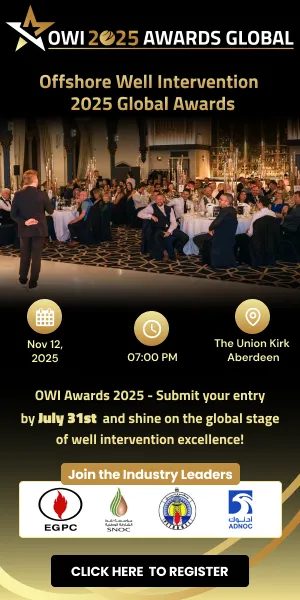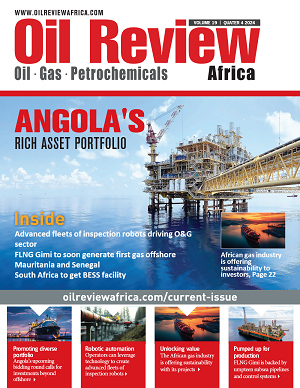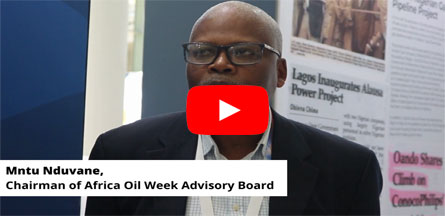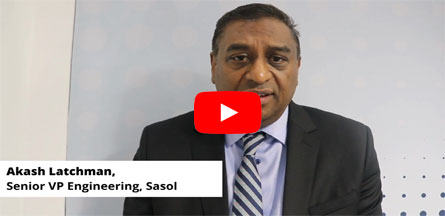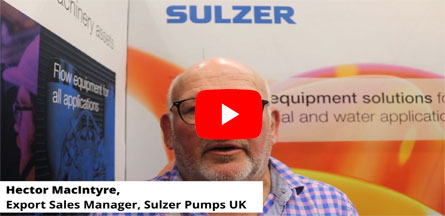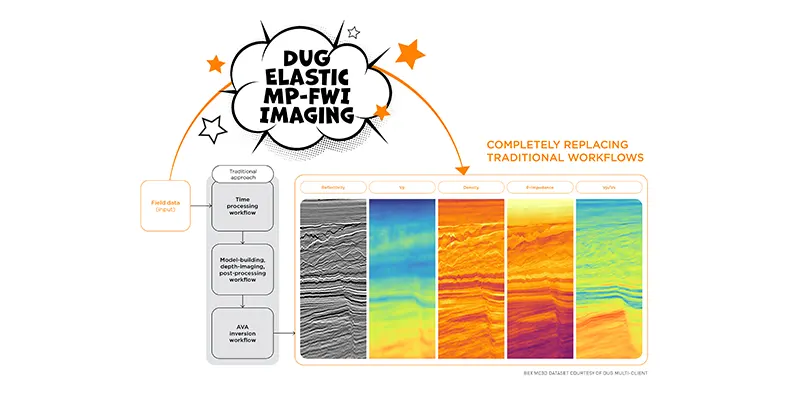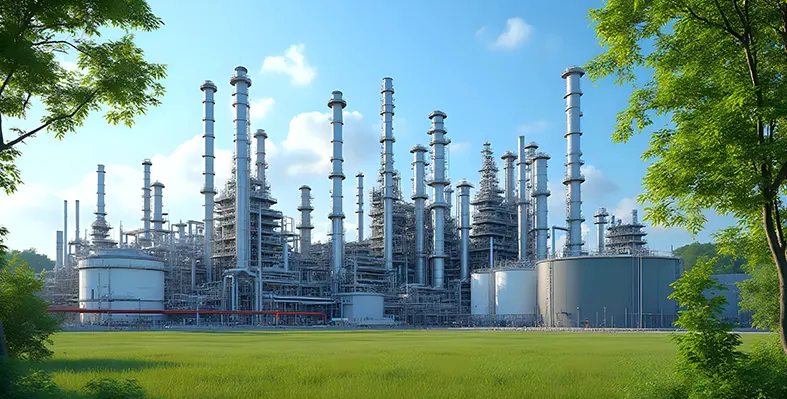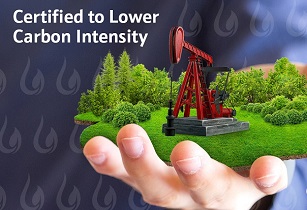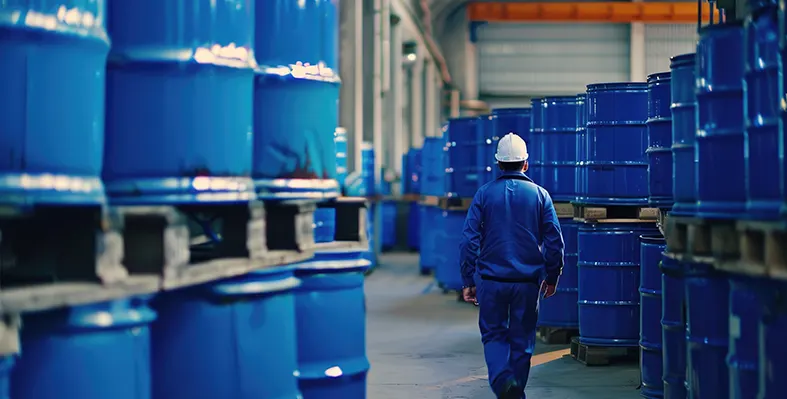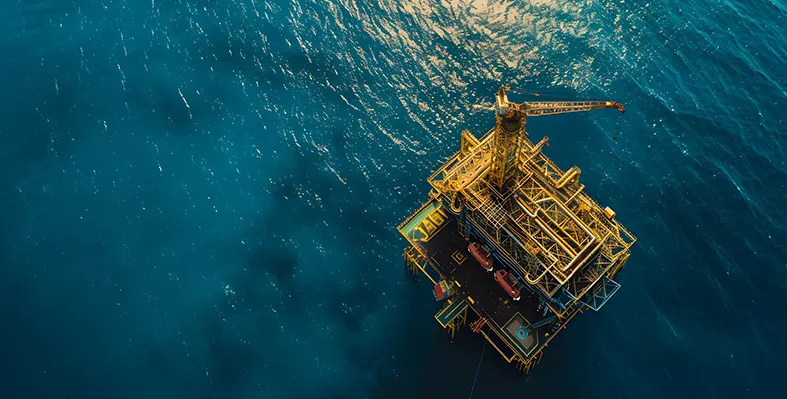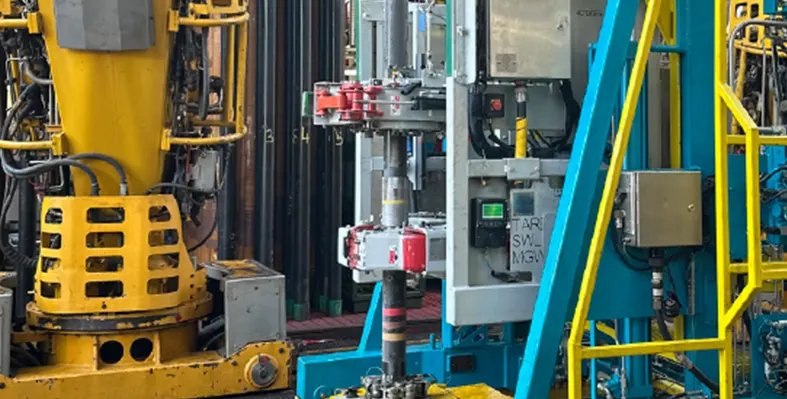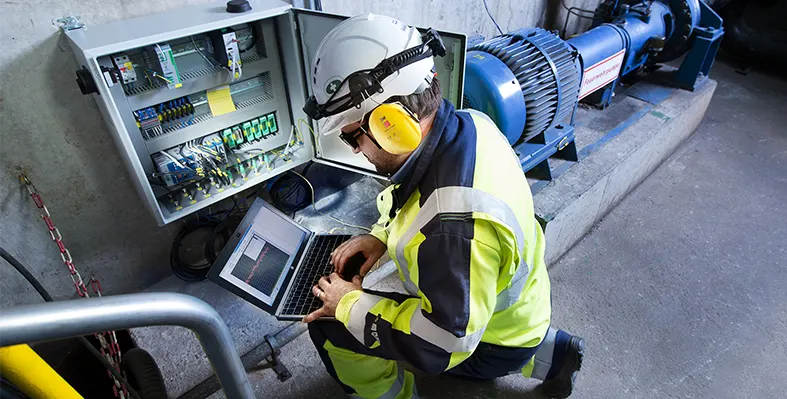In The Spotlight
Africa-focused upstream oil and gas company, Afentra plc, has reached a gross average production of 21,350 bopd for the first half of 2025
The company is on track with its multi-year redevelopment plan to boost recovery and production growth. The first half of the year saw continued ramp-up in water injection to reach an average of 35,000 barrels of water per day, so that a level of approximately 85,000 bwpd can be attained by the end of the year. The company, however, has recorded an excess of 100,000 bwpd of maximum injection rates in the first half of the year.
Afentra has reached enhanced production performance by conducting as many as 10 lightwell interventions. There was infrastructure upgrades across power systems, cranes, subsea lines and risers to enhance safety, reliability, uptime and protect future value.
The company is currently conducting platform surveys and access preparation so that rig mobilisation and drilling can be effectively achieved in 2026.
With the assurance of stable asset uptime, the company is on track to deliver US$180mn capital investment programme by the book.
The first half of 2025 also saw Afentra's acquisition of an additional 5% net interest in Block 3/05 and 6.67% net interest in Block 3/05A.
Another big highlight for the company during this period includes the onshore Kwanza basin growth plan. A risk service contract was initialed in the KON4 with operatorship and a 35% working interest. The blocks are known for its low-cost exploration potential, and one of them hosts the Quenguela Norte field, which is known to be the largest onshore discovery.
The Kwanza licenses are currently subjected to technical and operational workstreams, as historic well data are being reviewed and early-stage subsurface workshops conducted. An eFTG acquisition over KON15 and KON4 is now awaited by Q3 2025 to support future 2D seismic planning and subsurface evaluation before exploration, development, and appraisal opportunities can be identified over the next 18 months.
Afentra recorded an overall revenue of US$52.0mn. It has completed two crude oil liftings during the first half of the year, totalling to 0.7mn barrels, and expects lifting another five before the year ends.
"Afentra has continued to make strong progress in executing our value driven growth strategy, with the announced Etu transaction consolidating our position in Block 3/05 and the initialling of the KON4 RSC marking a further step forward in our onshore ambitions. The KON4 RSC marks an important step for Afentra, as it will be our first operated asset, a testament to our growing capabilities and a key step forward in our onshore ambitions. We continue to prioritise sound financial and risk management to ensure appropriate visibility on cash flow and the most recent cargo sale has moved Afentra into a strong net cash position. Combined with solid operational performance, material reserve replacement and strong asset cash generation, these milestones reinforce the strength of our portfolio and leave us well positioned to deliver further organic growth from our existing portfolio and pursue further value-accretive opportunities. The focus for the second half of the year will be continued operational progress across the portfolio and completion of the Etu and KON4 transactions as we continue to expand, diversify and strengthen Afentra's portfolio in Angola," said Paul McDade, chief executive officer, Afentra plc.
The Lower Congo Basin offshore Angola that falls under the purview of Block 1/14, revealed commercial gas from the Gajajeira-01 exploration well for partners, including the National Agency of Petroleum, Gas and Biofuels, Azule Energy (35%), Equinor (30%), Sonangol E&P (25%) and Acrep SA (10%)
This is great news for ANGP as this lends the national oil and gas body a strong ground to advance domestic gas consumption while also boosting the petrochemical industry. "The new discoveries are a motivating factor in our commitment to attracting private investment in the sector for the development and monetisation of natural gas," said Paulino Jerónimo, chairman of the ANPG Board of Directors.
The well reached the discovery of gas- and condensate-bearing sandstones in one of the Lower Oligocene targets following drilling at a water depth of 95 meters and approximately 60 kilometers offshore. Advanced evaluation formations and control tools were used to assess reservoir quality and fluid characterestics during the drilling of the first section. As drilling continues at the Gajajeira-01 well, the last interval of the Lower Oligocene LO300 remains the next target.
The initial results and testings collected from fluid samples have pointed towards multiple reservoirs with good mobility. Going ahead with the project can lead to the finding of gas volumes worth more than 1 trillion cu/ft, with up to 100 mn barrels of associated condensate.
To top that, the findings indicate an underlying hydrocarbon system at large, suggesting grand opportunities for exploration for the Block 1/14 partners.
"This is a landmark moment for gas exploration in Angola. The Gajajeira-01 well is the first dedicated gas exploration well in the country, and its success reinforces our confidence in the potential of the Lower Congo Basin. We are proud to contribute to Angola's long-term energy development with a focus on sustainability and energy security," said Azule Energy's CEO, Adriano Mongini.
Gabon is pushing for deepwater oil and gas exploration to bring new projects online, and restore production decline in Central and West Africa
The newly appointed Minister of Oil and Gas of Gabon, Sosthène Nguema Nguema, has announced the administration's interests in tapping into the country's deepwater acreage, 72% of which remains unexplored. To get this going, existing petroleum laws are being revised to introduce fresh incentives for deepwater exploration and interests.
The Gabonese Government is leveraging the Gabon Oil Company for a stronger ownership role and commercialising legacy assets with takeovers such as that of Carlyle owned Assala. Now, with the promotion of deepwater exploration in a global scale, Gabon will not only see a boost in production count but also the development of a new hub for refined product distribution in Central Africa.
Gabon is anticipated to produce close to 1 million barrels of oil per day. As the country boasts of more than 2 bn barrels of proven oil reserves, its current objective is to maintain a production count above 220,000 barrels per day for the short to midterm. This will become a lot easier with the advancement of deepwater exploration. Regulatory reform represents a cornerstone of the country’s exploration strategy, with potential improvements to petroleum legislation set to strengthen the competitiveness of investing in Gabon’s deepwater blocks. In 2019, the country introduced its Hydrocarbons Code. The new government seeks to go even further, recognising the presence of stiff competition from other offshore destinations globally. The code featured amendments to production sharing contracts (PSC), state profitability and tax, therefore providing a quicker path to profitability for foreign operators. Looking ahead, further revisions of this code stand to support new investment, encouraging deepwater exploration and new forays by global operators.
Major players are already active in Gabon, with ongoing developments underscoring the potential available across Gabon’s offshore blocks. Exploration and production company BW Energy, for example, signed PSCs for exploration blocks Niosi Marin and Guduma Marin in 2024, covering an eight-year exploration period with a two-year extension option. BW Energy and its partner on the block VAALCO Energy have committed to drilling one well as well as carrying out a 3D seismic acquisition campaign. BW Energy also has stakes in the Dussafu license, which features 14 producing wells tied back to a FPSO through a 20km pipeline. Partners on the license include the state-owned Gabon Oil Company (GOC) and Panoro Energy. Independent oil and gas company Perenco spud the Hylia South West discovery in Gabon in early 2024, revealing substantial oil-bearing columns in the Ntchengue Ocean reservoir. Chinese oil firm CNOOC launched wildcat drilling on Blocks BC-9 and BCD-10 in early-2023 on the back of 1.4 billion barrels of recoverable resource potential, with future discoveries set to double Gabonese oil production while de-risking deepwater exploration. Despite these developments, much of Gabon’s deepwater potential remains underexplored, highlighting a strategic opportunity for both active and potential players.
Increased hydrocarbon production in tandem with future deepwater discoveries are expected to support Gabon’s broader goals of creating a regional petroleum hub in Gabon. Strategically positioned on the West coast of Central Africa, Gabon is making strides towards enhancing oil and gas refining, storage and distribution capacity. Major infrastructure projects signal the country’s intention to become a petroleum hub. Notably, Perenco is advancing the development of the Cap Lopez LNG terminal in Gabon, targeting first production by 2026. Situated at the existing Cap Lopez oil terminal, the $2 billion project will introduce a FLNG vessel designed to monetize offshore gas reserves and reduce flaring. The FLNG vessel will feature a production capacity of 700,000 tons of LNG and 25,000 tons of LPG, supported by a storage capacity of 137,000 cubic meters. The project complements the Batanga LPG facility, which came online in December 2023 with a target production capacity of 15,000 tons of LPG annually. Beyond LNG and LPG, Gabon is working towards enhancing refining capacity with plans to expand its sole operating refinery – SOGARA – from 1.2 million tons to 1.5 million tons of crude. This expansion would enable the country to achieve self-sufficiency in refined petroleum products by 2030.
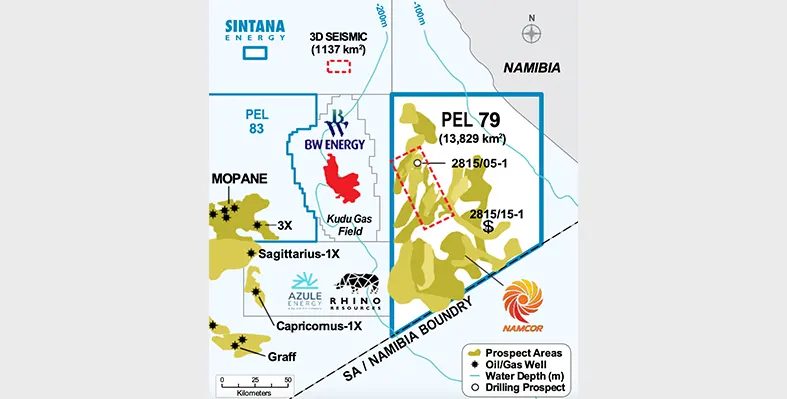
PEL 79 sits adjacent to an emerging microregional dynamic focused on oil-weighted prospectivity. (Image source: Sintana Energy))
The Ministry of Industries, Mines and Energy for the Republic of Namibia has approved a second renewal exploration period with a 12-month extension for the petroleum exploration license 79 (PEL79) that includes blocks 2815 and 2915 located in Namibia's Orange Basin
The PEL 79 is operated by the National Petroleum Corporation of Namibia Ltd (Namcor) with a 67% interest, while Giraffe Energy Investments -- an entity in which Sintana maintains a 49% ownership interest -- owns a 33% share on the license.
Sitting inboard of licenses operated by BW Energy, Rhino Reosurces, and Shell, PEL 79 promises incredible prospects with an existing prospect inventory underpinned by more than 4760 km of 2D seismic, 1,137 sq km of 3D seismic and 1 well with gas shows intersecting the Kudu source rock.
To top that, PEL 79 sits adjacent to an emerging microregional dynamic focused on oil-weighted prospectivity.
Right outboard to the west of PEL79, the license operator, Rhino Resources, has drilled two wells, including the Capricornus-1X discovery well, that reflected a flow test exceeding 11,000 barrels per day of light oil with limited associated gas from a 38-metre net oil-bearing reservoir. The third quarter of the year will see the commencement of further drilling activity, targeting the Volans prospect, with up to two optional wells that could include appraisals.
BW Energy has acquired 4,600 sq km of new 3D seismic over PEL 3, located directly west of PEL 79, and has moved to initiate an exploration and appraisal campaign including drilling the Kharas well located northwest of Kudu during H2 2025.
“We appreciate the leadership by our joint venture partner NAMCOR to secure the extension for PEL 79. Extending our exposure during a period of significant offset activity positions us to fully realise the significant geologic, commercial, and strategic value of PEL 79,” said Robert Bose, chairman of Giraffe and chief executive officer of Sintana. “The potential for high impact progress on PEL 79 adds to the prospect for significant developments across our Namibian offshore portfolio. We expect material progress on all our licenses over the coming quarters,” he added.
88 Energy Limited has secured license extension for 12 months from the Namibian Government, extending the PEL 93 First Renewal Exploration Period to 2 October 2026
During the extended period the company will aim datasets Integration to select drilling location, and complete an Environmental Impact Assessment (EIA) for drilling.
The PEL 93 is located in the Owambo Basin, onshore Namibia.
A farmout agreement with Monitor Exploration Limited for a joint venture gives 88 Energy Limited a 20% working interest in PEL 93. By way of an amendment on the agreement, the partners have introduced a new stage 1A work programme to target pre-drill de-risking.
The 2024 2D seismic data collected from an anticlinal structure -- Lead 9 -- spreading across 100 sq km has led to new insights to be unlocked from a gravity survey area. The partners have hence included on the programme a high-resolution gravity survey to focus on the southern area of PEL 93. The survey will be supplemented by radiometric data.
This anticipation has been strengthened by similar findings from the Kavango West 1X exploration well where ReconAfrica is now all set to start drilling this month.
Lead 9 is similar to Recon’s imminent Kavango West 1X well in that both show a very large and robust structural closure including the shallow clastic reservoirs, the deeper Otavi carbonate reservoir seen in Naingopo-1 and the deeper source rocks.
Monitor's statement read, “Our early results are pointing to something potentially significant in the southern area of PEL 93 in the Owambo Basin. With multiple datasets aligning and the prospect of even larger structures emerging, the Joint Venture is building momentum towards a drilling event and what could be a basin opening discovery with broad implications for all of Namibia given the significance in unlocking a major new hydrocarbon play.”
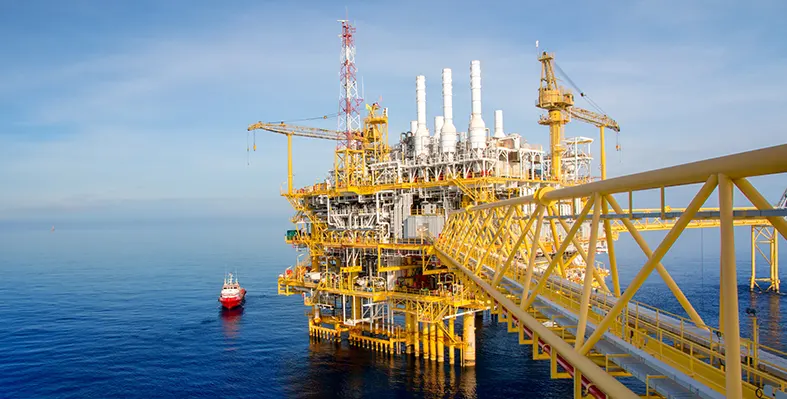
The project will involve the installation of compact twin-well configurations. (Image source: Adobe Stock)
The engineering, procurement, installation and commissioning work for Phase XI Deepwater Project of the West Delta Deep Marine (WDDM) concession has been vested on Petroleum Marine Services (PMS) by independent engineering consultancy Longitude Engineering
Longitude’s engineering scope comprises the detailed design of deep-water rigid jumpers, development of fabrication drawings, onshore and offshore handling procedures, offshore installation engineering, process and stress modelling, and key HSE studies and engineering workshops.
The Phase XI development of the Burullus gas field involves the tie-in of three subsea twin deep-water natural gas wells. The scope of work includes engineering, procurement, fabrication, installation, and commissioning support five subsea M-shape rigid jumpers, equipped with deep-water specialised connectors, multiphase gas meters, and sand detection systems.
Compact twin-well configurations will be installed, each with a subsea jumper span limited to approximately 25 meters in length. This will be placed in a brownfield environment adjacent to an existing live natural gas deep-water system, part of one of the largest deep-water natural gas networks globally.
A tie-in structure, namely “Tie-In Spool Base, TSB” designed to accommodate multiple jumpers within a single subsea module will offer enhanced production flexibility and enabling well allocation interchangeability.
Subsea control system components to support well operation and chemical injection.
Located approximately 90 kilometres offshore Egypt, in the north-western Nile Delta region of the Mediterranean Sea, the WDDM concession is operated by Shell through its joint venture, Burullus Gas Company. The area includes 17 gas fields at water depths ranging from 300 to 1,200 meters.
“We are delighted to secure this contract following the success of our previous work on Phase X. The West Delta Deep Marine development is of major significance to Egypt’s oil and gas sector, and we remain committed to delivering the highest quality of service to PMS and, ultimately, to the operator,” said Daniel McGowan, Offshore Project Director at Longitude Engineering.
Longitude Engineering provides specialised engineering, design, and analysis consultancy services across various markets, including renewables, maritime, oil and gas, and infrastructure. The company’s expertise spans concept selection, Pre-FEED and FEED studies, marine operations engineering, and vessel design.
Predator Oil & Gas Holdings Plc, which has assets in Morocco, has commenced the rigless testing operations at the MOU-3 well at Guercif
Planned over a period of 10 days, the operations will include perforating and testing of the shallow 'A' Sand.
Predator's assets in Morocco boasts of highly prospective onshore gas exposure and production. The asset holds unique value for the company in terms of CNG development, as it unlocks easy access to shallow biogenic gas.
Moroccan gas prices lead in a competitive market, with one of the most attractive fiscal terms in the world.
Predator has an experienced management team with particular knowledge of the Moroccan sub- surface and operations.
Mozambique’s state-owned oil company, Petromoc, has entered a strategic deal with a Nigerian energy firm called Aiteo to develop an oil refinery with a capacity to reach 240,000 barrels-per-day
The agreement is a two-way blessing as it not only attracts foreign investments for Mozambique in strategic sectors, but also pushes Aiteo to a further influential position as a local company beyond its Nigerian base.
Signed during a formal ceremony chaired by the Mozambican President Daniel Chapo, the agreement will advance energy independence for the country. It will boost fuel supply security, facilitating the construction of one of the largest refineries in southern Africa, and the Southern African Development Community (SADC).
The engineering procurement and construction activities for the refinery will be covered by an American firm called Deerfield Energy Services LLC. The refinery will be developed in a phased manner with an initial aim to install an 80,000 bpd processing unit within a two-year time frame, and gradually scaled up to the maximum capacity.
While the project promises several benefits, the financial, environmental compliance and execution timelines-based risks involved needs consideration. When ready for operation, the plant will be able to produce petrol, diesel, jet fuel and naptha for domestic as well as regional use.
Calling the project a 'milestone' for its employment generation possibilities, Ransome Owan, Aiteo's group managing director for infrastructure, said, “It will reduce import reliance, create jobs, and lay the foundation for Mozambique to become a leading hub in the region’s downstream energy sector.”
Mozambique is committed to an extensive industrial strategy to advance energy access, economic diversification, and infrastructure development. The refinery falls in line with this strategy as it will ensure greater access to cleaner fuels and advance clean cooking initiatives with the easy availability of liquefied petroleum gas (LPG) distribution.
As Africa is zooming in on brownfield sites for maximum oil recovery, artificial intelligence and machine learning technologies are fuelling the industry's optimisation goals
Redifining operational efficiency by extending field life and maximising output, AI is set to move the oil and gas industry at a US$6.4bn market value by 2030.
As major operators increasingly adopt AI, global oilfield technology companies like Baker Hughes, Halliburton or SLB have opened bases in Africa. SLB's technology is backing several billion-dollar oil projects in Angola, and has introduced the Africa Performance Centre in Luanda this year. It has a strong presence in other regions of Africa as well.
Repsol has several developments underway in Libya, Algeria and Morocco and strives to bolster production across these markets.
Enhanced oil recovery is currently witnessing a disruption as AI has unlocked access to large datasets which is unimaginable with traditional systems. This makes a huge difference for operators in taking the right decisions. With deep geological and production data in hand, reservoir management and pattern identification become much simpler.
AI is now way past the experimental stage, and is being adopted on a policy level as well. Many African countries are streamlining policy to support EOR at legacy assets. Angola, for example, implemented its Incremental Production Initiative in 2024 which offers tax incentives to encourage reinvestments in mature oilfields. Energy major ExxonMobil made the first discovery – the Likembe-01 well - as part of the initiative in 2024, demonstrating the role policy plays in unlocking incremental resources. The African Union Commission also declared AI as a strategic priority for the continent in May 2025, citing the role machine-learning plays in transforming the continent’s development trajectory.
These topics will drive conversations at the African Energy Week (AEW): Invest in African Energies 2025 that will be taking place from 29 September 29 to 3 October in Cape Town.










